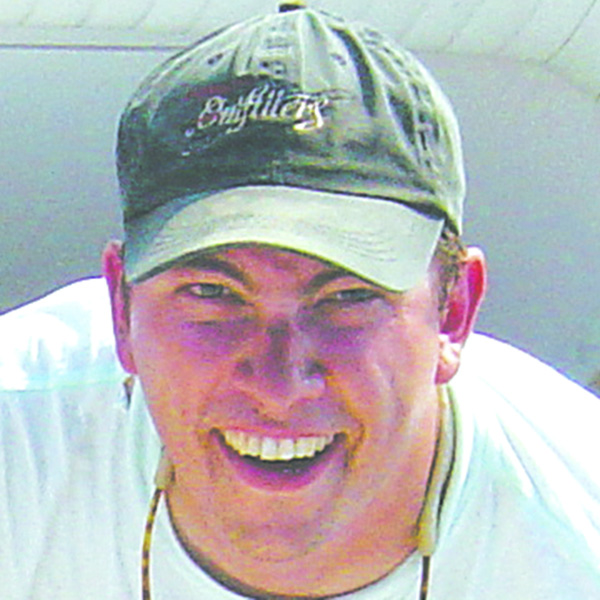

The little tunny, or false albacore, is increasingly becoming one of the most economically important fish species in our region.
With the striped bass blitzes, which long made Montauk the mecca of surfcasting, growing less and less reliable, the pursuit of albies is at least filling some of the attraction gap luring anglers to the East End, as well as the dollars they spend on tackle, charters, gas, food and lodging.
Albies are an odd duck on our fishing scene. They have only really been on the radar of recreational fishermen in the Northeast for about the last 25 years or so. I know few fishermen who even remember having ever caught one, or heard of one, before the early 1990s.
Certainly, it can’t be that they weren’t here. It’s possible that perhaps they had been victims of the wholesale commercial annihilation of tunas of the 1960s, 1970s and 1980s that nearly wiped out the bluefin tuna stock and only started recovering their numbers, like the bluefins did, in the 1990s.
Or maybe it’s just that with the growth in popularity of saltwater fly fishing and light tackle angling, we just started noticing them.
Unlike bluefin and almost all other species of fish that frequent our waters, albies have basically no market value — for now. There are a very few folks who keep them to eat and a few who keep them to feed to their cats, but they are generally considered inedible. (I’ve kept about a half dozen of them in my life, three of which made quite tasty sushi, while the other three were a gross, brown, mushy meat.)
Most of the albies that are harvested by anglers, it seems, are kept for use as bait. Their bellies, sewn into a chevron of silver, oily goodness, are the favored bait for deep-drop swordfishing in Florida.
But because there has been very little demand for their harvest, there previously has been no reason seen to regulate it. Because of this, there has never been any research done into their migratory habits, their range and stock mixing, or when and where they spawn. The lack of economic incentive means that government regulators are unlikely to take up the matter on their own.
Enter the American Saltwater Guides Association.
You’ve heard about the ASGA quite a bit in this column over the past year, and that’s because I seem to run into their work everywhere I turn in the fishing world these days.
From watchdogging the federal bungling of striped bass management, to opposing the political teabagging that is conservation equivalency, to highlighting the value of redfish in the Louisiana delta, the ASGA is quickly distinguishing itself as one of the most important organizations, alongside the Coastal Conservation Association, working in the interests of recreational fishermen on the East Coast. Some other groups ostensibly flying the same flag have proven to just be corporate and political shills.
ASGA is mostly made up of guides, so they are looking out for their own livelihoods, but as people who feed their families by taking anglers to catch fish, they have one overarching interest: that there be more fish and bigger fish for them to take their customers to catch.
And for many of them, albies have become among the most important fish in their sights.
Albies may only be economically important to light tackle fishing guides right now, but we know that can change in a hurry (see: bluefin tuna).
So the ASGA has taken it upon themselves to start trying to piece together the facts about the East Coast’s albie stock and to use the information they gather to convince the National Marine Fisheries Service that albies need to be officially managed to prevent future over-harvesting.
This past fall, some of the group’s guides started tagging albies with acoustic transmitters to track their movements along the coast through the year. Others collected small fin clippings for genetic analysis. And they organized a letter-writing campaign to the South Atlantic Fisheries Management Council, which has jurisdiction over little tunny, to start putting the fishery in the spotlight with the management.
Some early results of the two efforts have started to come in, and there’s some enlightening info already — the entire East Coast stock appears to be genetically similar, for instance, so it is probably not separate breeding groups.
The whole of the work they are doing and the results that are coming in and can be expected over the next few months are worth catching up on through the group’s podcast, “The Guide Post,” which you can listen to on their website, saltwaterguidesassociation.com, or wherever you get your podcasts, as they say.
You can also get a good overview of the group’s work so far on the first winter gathering of the local fly fishing group Masters of the Fly. The ASGA will be the guest of honor for the first livestream chat on February 5 at 8 p.m. Go to mastersofthefly.com to sign up — it’s free.
The ASGA is just scratching the surface now, but their enthusiasm and enterprise is impressive for a small group of regular guys and already shows a lot of promise for adding real, meaningful facts to the conversation about albies.
It would be nice to see more of that kind of ambition from the groups that have their values in the right place.
Catch ’em up. See you out there.
 More Posts from Michael Wright
More Posts from Michael Wright